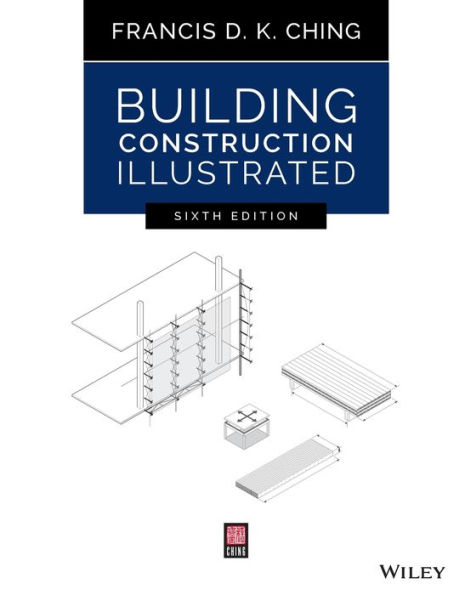PREFACE
The first edition of this illustrated guide to building construction introduced students and builders of architecture to the
fundamental principles that govern how buildings are erected. The second edition
provided a more expansive survey of building construction by adding coverage of structural steel, reinforced concrete,
and curtain wall systems. This third edition remains a comprehensive introduction
to the principles underlying building construction, refines the graphic format and organization of the first two editions,
and incorporates the following changes.
- Chapter 2 expands the discussion of structural principles, elements, and systems.
- Chapter 3 includes coverage of pile and caisson foundation systems.
- Chapters 4, 5, and 6 are reorganized to conform more closely to the Masterformat system established by The
Constructions Specifications Institute (CSI) for organizing construction information.
- Chapter 7 now includes coverage of external cladding and siding systems, while Chapter 10 focuses
on interior finishes.
- CSI Masterformat section numbers are referenced wherever they apply to a building material
or construction activity.
- The Americans with Disabilities Act Accessibility Guidelines are provided not only in the
Appendix but integrated as well throughout the various chapters wherever appropriate.
It would be nearly impossible to cover all building materials and construction techniques, but the information presented
herein should be applicable to most residential and commercial construction
situations encountered today. Construction techniques continue to adjust to the development of new building materials,
products, and standards. What does not change are the fundamental principles that
underlie building construction. This illustrated guide focuses on these principles which can serve as guideposts when
evaluating and applying new information encountered in the planning, design, and
construction of a building.
Each building element, component, or system is described in terms of its end use. The specific form, quality, capability,
and availability of an element or component will vary with manufacturer and locale.
It is therefore important to always follow the manufacturer's recommendation in the use of a material or product and to
pay careful attention to the building code requirements in effect for the use and
location of a planned building. It is the user's responsibility to ascertain the appropriateness of the information
contained in this handbook and to judge its fitness for any particular purpose. Seek the
expert advice of a professional when needed.
Metric Equivalents
The International System of Units is an internationally accepted system of coherent physical units, using the meter,
kilogram, second, ampere, kelvin, and candela as the base units of length, mass, time, electric current, temperature, and luminous intensity. To acquaint the reader with the International System of Units,
metric equivalents are provided throughout this book according to the following
conventions:
- All whole numbers in parentheses indicate millimeters unless otherwise noted.
- Dimensions 3 inches and greater are rounded to the nearest multiple of 5 millimeters.
- Nominal dimensions are directly converted; for example, a nominal 2x4 is converted to 51 x 100
even though its actual 1-1/2" x 3-1/2" dimensions would be converted to 38 x 90.
- Note that 3487 mm = 3.847 m.
- In all other cases, the metric unit of measurement is specified.
- Refer to the Appendix for metric conversion factors.






